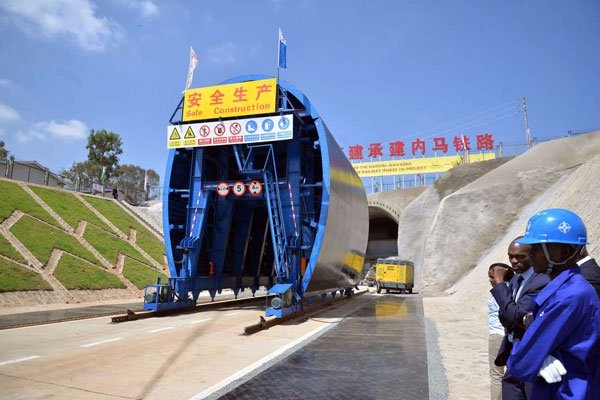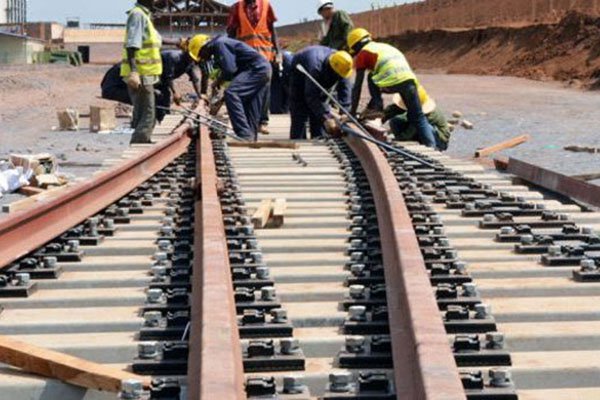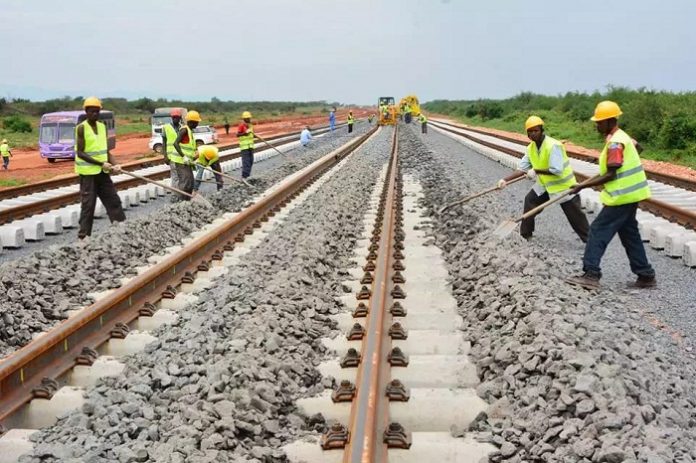

After two years of work, China Communications Construction Company (CCCC) unveiled the longest railway tunnel in East Africa this week.
Opened ceremonially on 24 September, the 4.5-km Ngong tunnel, in Kajiado County on the outskirts of Nairobi, is part of the Standard Gauge Railway (SGR) under construction from the Kenyan capital to the town of Naivasha. Michael Waweru, chairman of rail operator Kenya Railways, used the occasion to hail the transformational nature of the SGR, which already stretches from the port city of Mombasa to the capital, and is planned eventually to extend inland to Uganda.
“It is an ambitious undertaking by the government of Kenya envisioned to revolutionise the social economic development of the country,” Waweru said, reports Chinese state news agency, Xinhua. The single-track tunnel has a clearance height of 9 m and is 7m wide.
CCCC used the New Austrian Tunnelling Method of drilling and blasting, a first for Kenya on this scale, and suitable for variable geological and groundwater conditions, said Xinhua. It took 24 months for 600 workers and engineers to dig the tunnel, battling water leaks and uneven pressure, and taking care to protect an oil pipeline.
Among the tunnel’s features are 146 “refuge holes” for maintenance workers to shelter in when trains approach, one every 30 m. A large rescue channel has been incorporated to let vehicles in in emergencies. Six jet fans will be installed to ensure ventilation once the tunnel is operational, project officials said.
The SGR is a major project for Kenyan President Uhuru Kenyatta that links the country’s fortunes to Chinese finance and construction capability. State-owned CCCC completed the first phase from Mombasa to Nairobi in May last year, to national jubilation. But there was concern in Nairobi earlier this month when China refused to commit to funding the SGR’s $3.8-bn third phase, from Naivasha northwest to Kisumu on the shore of Lake Victoria.
In a surprise change of tone, China’s President Xi Xinping deferred committing more cash until a commercial viability study is done on the whole line, raising fears over the original SGR plan, which was to capitalise on demand for export capacity in landlocked Uganda and neighbouring countries.





